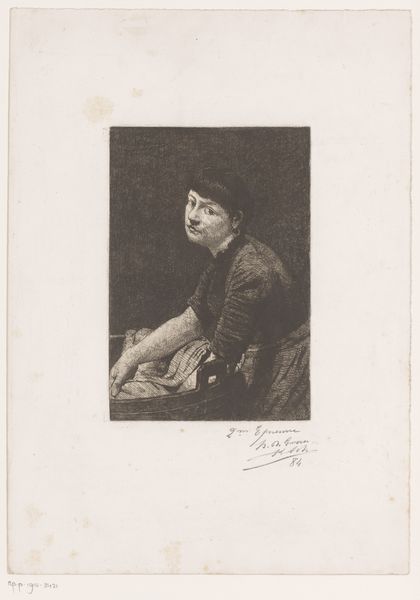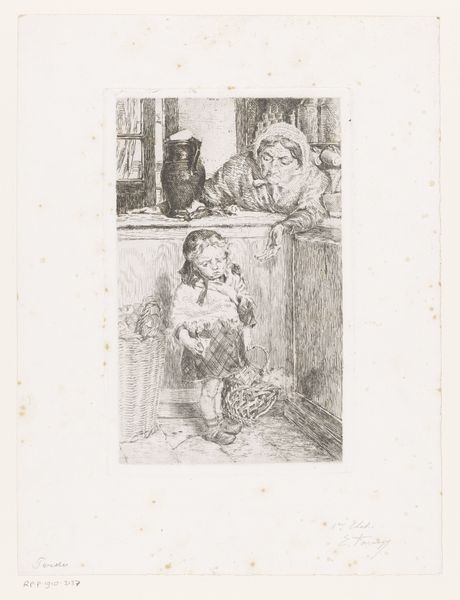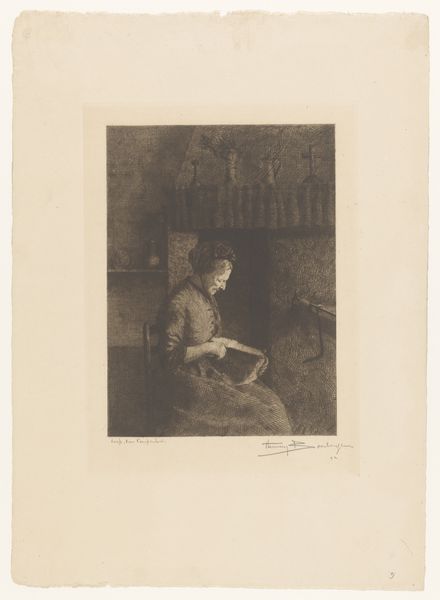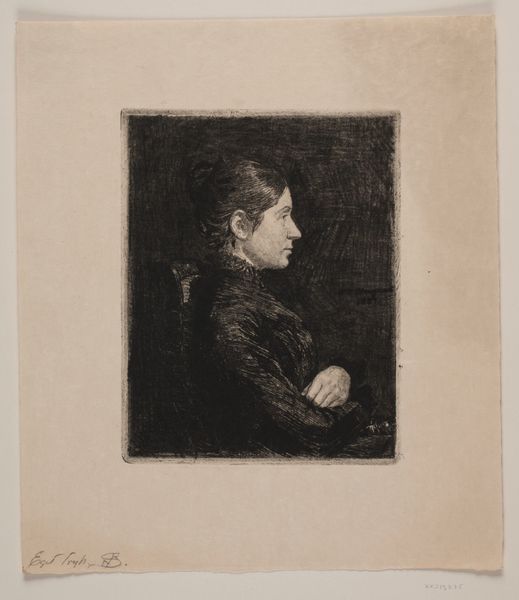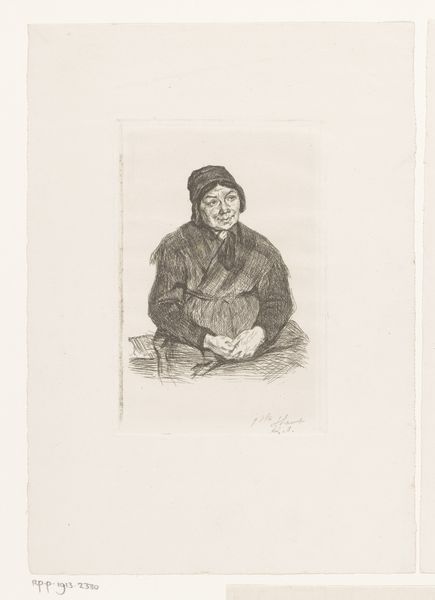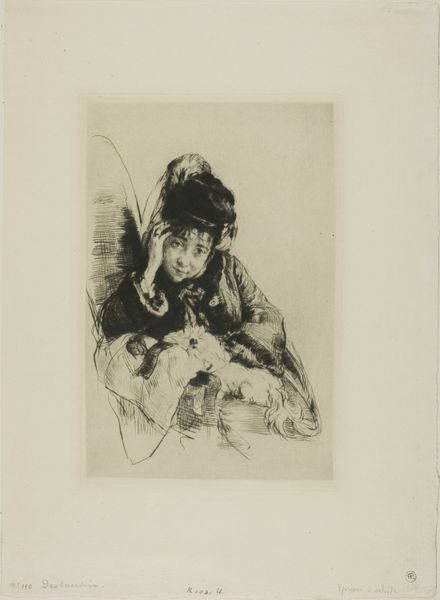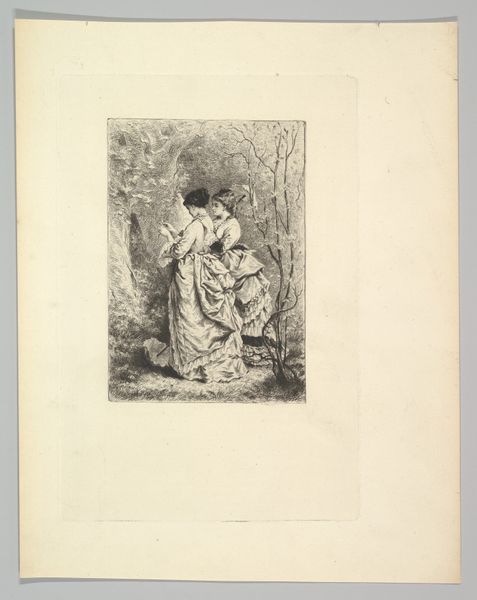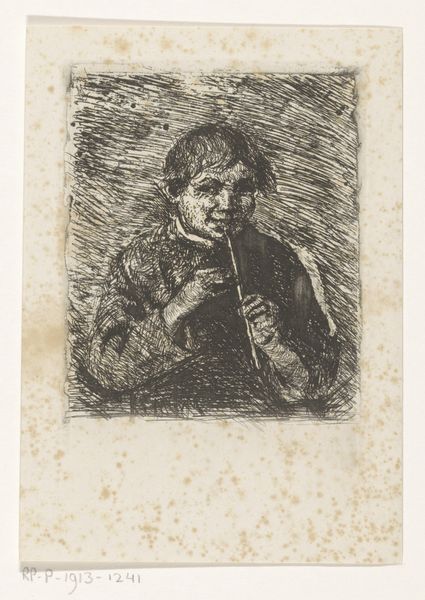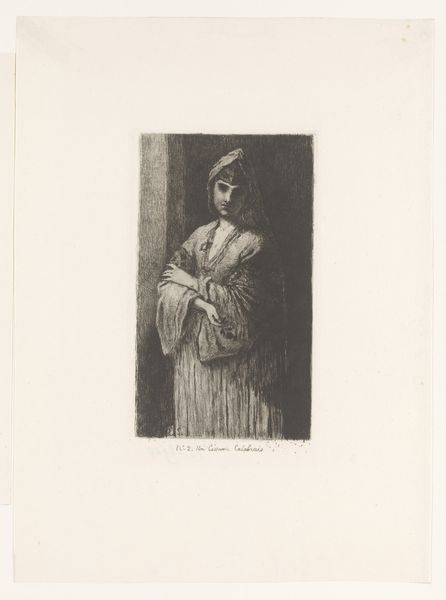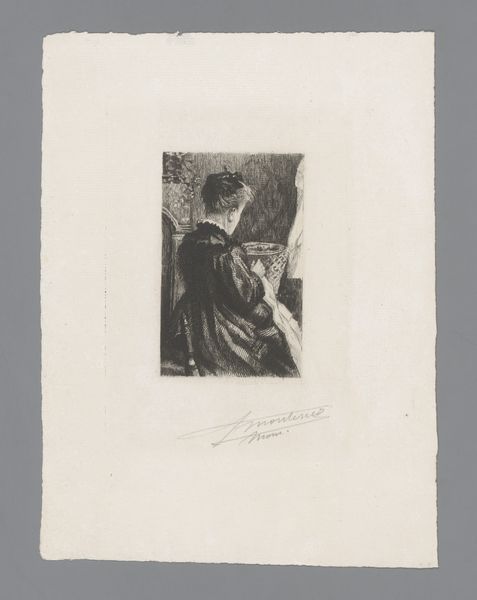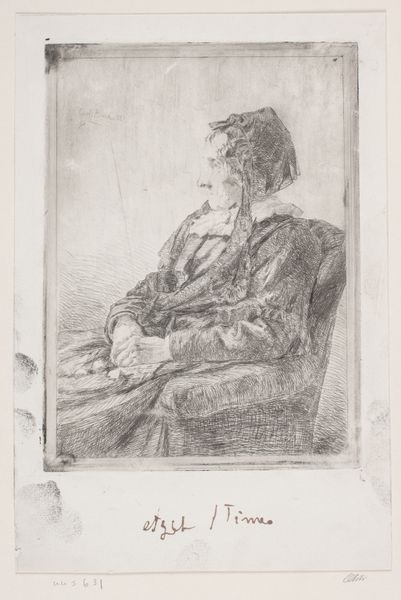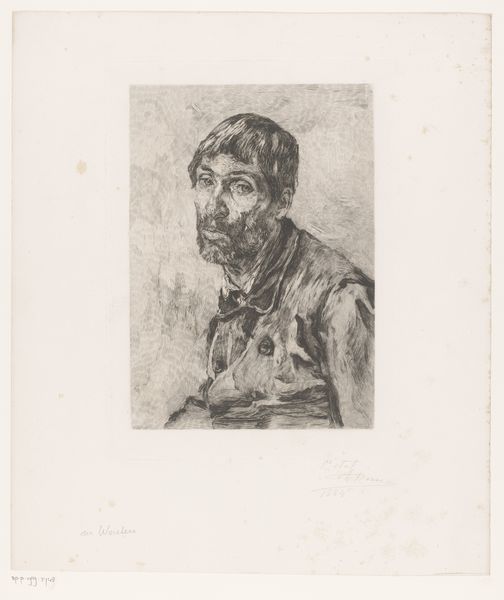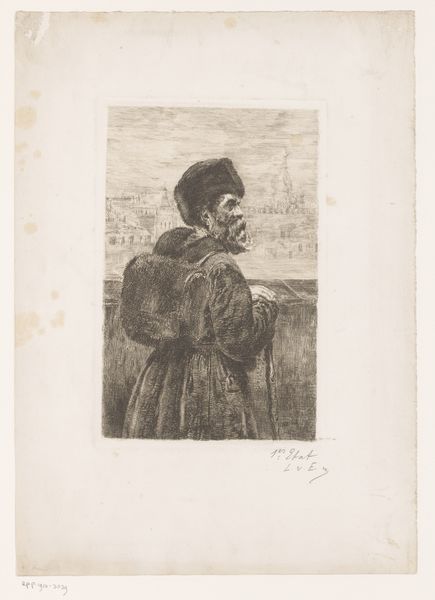
print, etching
# print
#
etching
#
genre-painting
#
realism
Dimensions: height 200 mm, width 137 mm
Copyright: Rijks Museum: Open Domain
Curator: The somber tonality certainly establishes a mood, doesn't it? A profound quietude or subdued acceptance of a timeless human burden comes to mind. Editor: Precisely. This etching, crafted in 1884 by Henri De Graer, is titled "Vrouw bij een wastobbe"—"Woman at a Washing Tub". Note how the realism he embraces isn’t mere reproduction, but rather a structural contemplation on light and shadow. Observe the meticulous etching lines forming and deforming the figure, her presence arising organically. Curator: The tub as a symbol...of course, a classic representation of domestic labor, tied deeply to notions of purity, cleansing—almost ritualistic, yet also representing hardship, ceaseless toil. What could be seen, perhaps cynically, as women’s plight in turn of the century domesticity? Editor: An insightful point, and it extends further than you might think. The formal placement, note how the washing tub isn't presented in an abject light. The square in the composition adds an essence of dignity or simple respect to her daily work, rather than just presenting hardship. Her direct, confident gaze challenges sentimentality or pity. It is about simple reality in which both her agency and the subject’s essence in being, stand central. Curator: Her clothes speak to practicality rather than comfort—simple shapes without affectation. Also, those sharp, strong lines emphasize the texture of the fabric, even the way light catches them seems intentionally unromantic. It directs us from the figure’s expression. Editor: Indeed. We are experiencing Realism distilled to its core: existence depicted plainly through careful study of structural essence via line and tonal rendering. Curator: The gaze then is that of honest regard and strength, in the face of constant hardship. It leaves you admiring not for the woman’s status in being at the washing tub, but at the essence of who she is and that, she does. Editor: Absolutely, and through the material qualities of this etching, De Graer constructs far more than an image—but a profound observation about dignity within labor and living itself.
Comments
No comments
Be the first to comment and join the conversation on the ultimate creative platform.
